In May, Jülich Supercomputing Center hosted the 2023 Helmholtz GPU Hackathon, together with HZDR, HIDA, and OpenHackathons. After an initial virtual first day, nearly 80 people came together on the Jülich Campus to work together on accelerating the performance of the scientific applications they brought along.
Most people outside the supercomputing bubble probably associate GPUs – Graphics Processing Units – first and foremost with powerful graphics cards that belong in every decent gaming PC. But when we talk about GPUs in high-performance computing, we mean the larger siblings of these devices creating the nice-looking imagery in your computer games. Our GPUs lack actual display connections as we solely use them as computational processors. They are very good for crunching large, structured data, delivering great performance and efficiency. For that reason, most of the large supercomputers at the moment get their performance out of GPUs.

One of them is going to be JUPITER, the first European Exascale supercomputer, to be hosted at JSC next year. Also, the currently most powerful supercomputer in Jülich, JUWELS, gets most of its 85 petaflops (or 85 quadrillion operations per second), from such graphics processors. GPUs are amazing devices with a lot of computing power, but programming them needs some training on the ecosystem.
The Helmholtz GPU Hackathon offer an amazing opportunity to get a compact jump-start into the GPU ecosystem and support improving a GPU application within four intensive days. The event happens every year – if you are curious, read a previous blogpost on the GPU Hackathon of 2017. In addition, other GPU Hackathons are organized world-wide, every year, through the umbrella of OpenHackathons. Researchers apply to one of the events with their respective scientific challenge to be solved through a program on the GPU. After a review, the eligible teams are invited to participate under the guidance of two dedicated expert mentors, showing them the ropes of GPU computing.
For the Hackathon this year in Jülich, ten teams participated from a variety of scientific domains. Twenty mentors from JSC, HZDR/TU-Dresden, and NVIDIA supported them in their accelerated journey. The first day of the Hackathon was an entirely virtual day; logistics were clarified and team and mentors formulated a plan for the event. A week later on 9 May, we were happy to finally welcome nearly 80 Hackathon participants on the Campus to start the three days of hacking in meatspace.
Soon, laptops were opened, coffee mugs filled, and connections to the JSC supercomputers (JURECA DC and JUWELS Booster) established; hotspots of the respective applications were analyzed, potential for optimization identified, strategies discussed, and improvements implemented. At times, every participating team presented quick status updates to assess the status and allow for collaborations on similar pain points.
All teams made progress, some starting at the very beginning, others optimizing individual code segments for just a little more computational intensity or reduced data movement. Thanks to the support by HIDA, every participants could concentrate exclusively on their hacking duties as (delicious!) catering was provided. At the end of the last day, the teams wrapped-up the event by showing their progress and outlining the future plans. We hope to see them soon on JUWELS – or even JUPITER, once the machine is in production!
Below, we have included impressions of some of the participating teams: HackG-X, IhAckS-9, SmartPhase, and LSTS; and also an introduction by myself included further up. If you like what you hear, and we could pique your interest: Let’s meet for the Helmholtz Hackathon 2024! It’s fun and productive!
Thanks to all people and organizations involved in the event: The mentors, the organizational team at HIDA and OpenHackathons, the JSC staff, and the PtJ colleagues supporting us with their rooms!


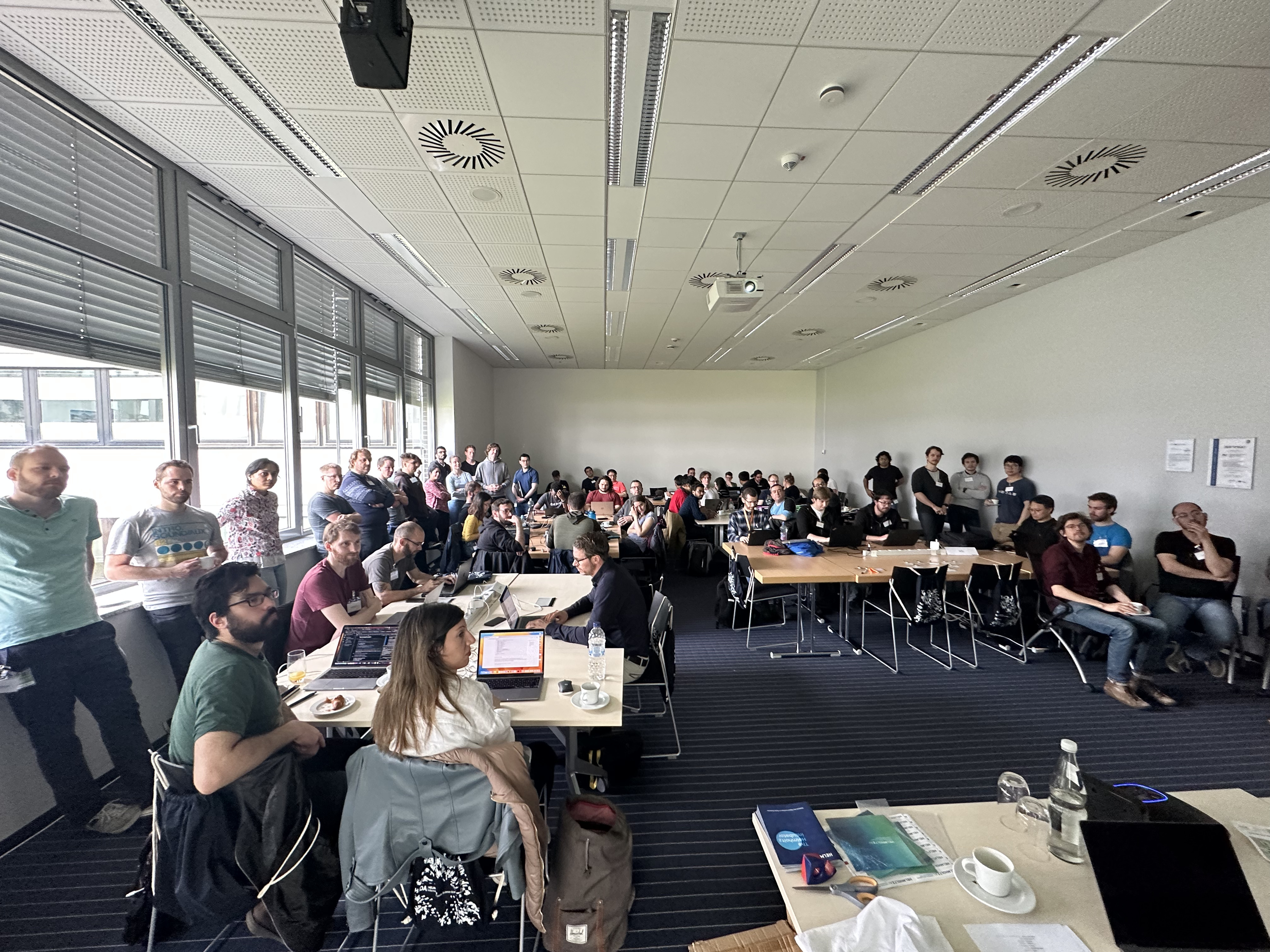
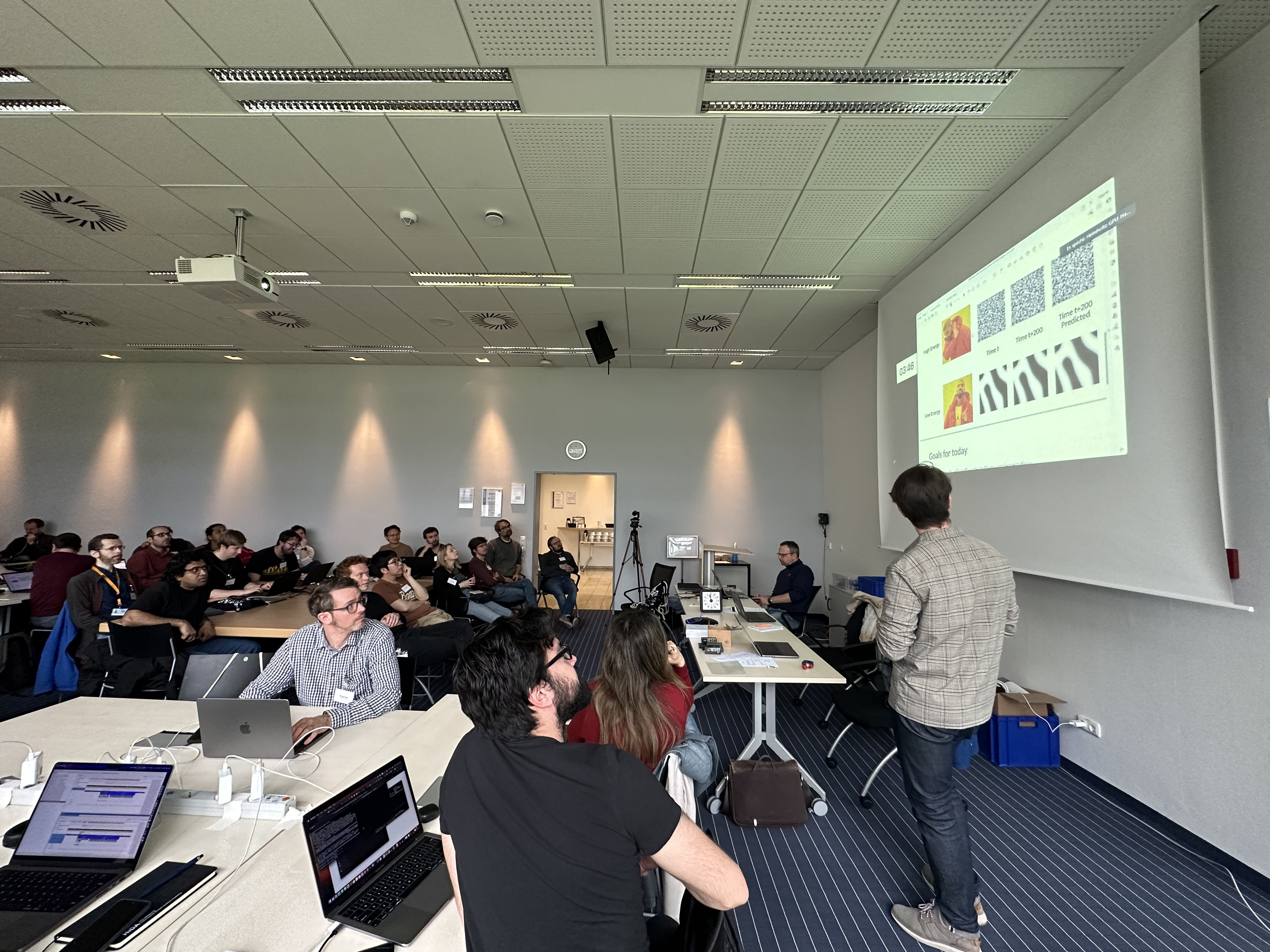
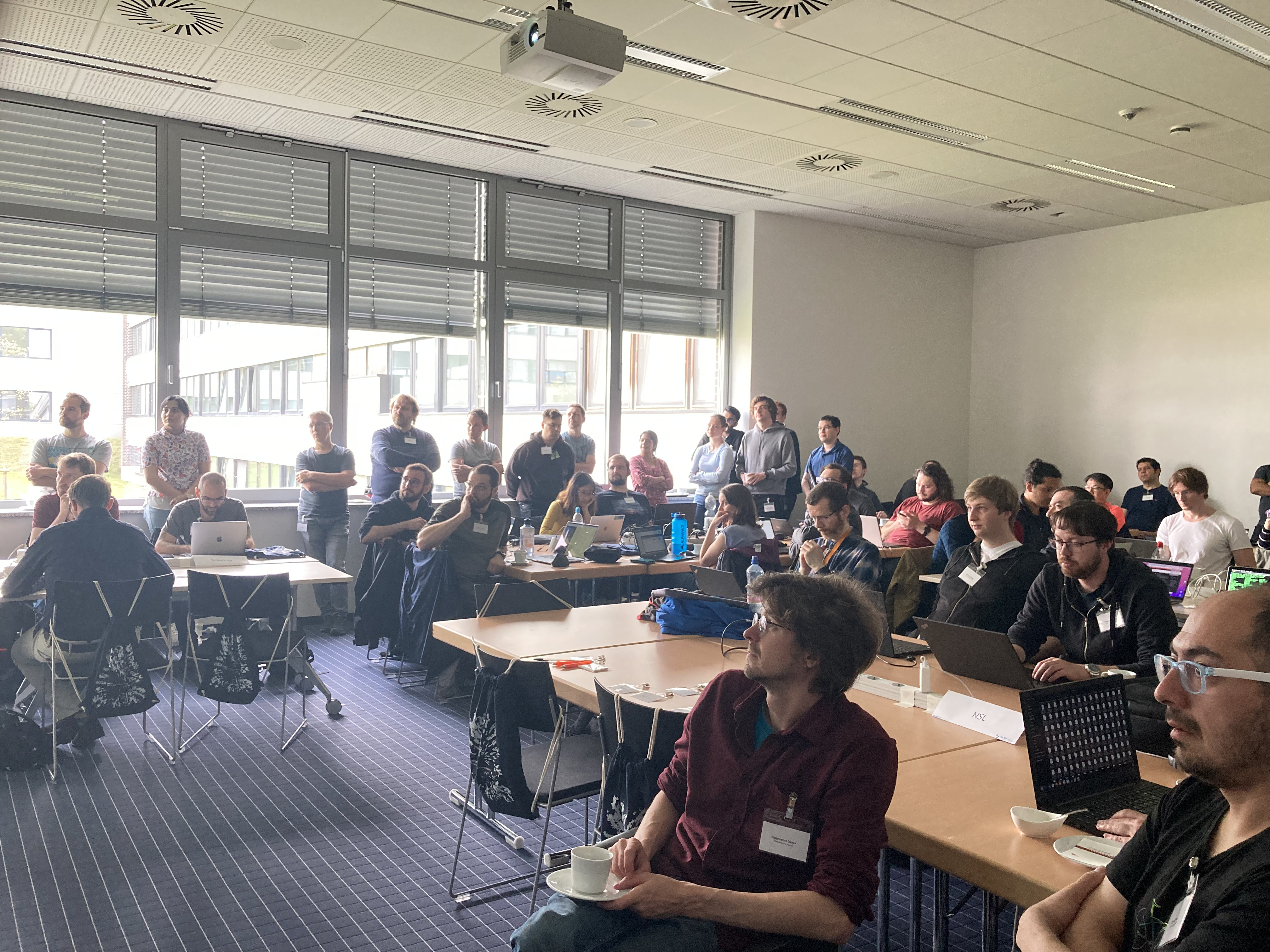
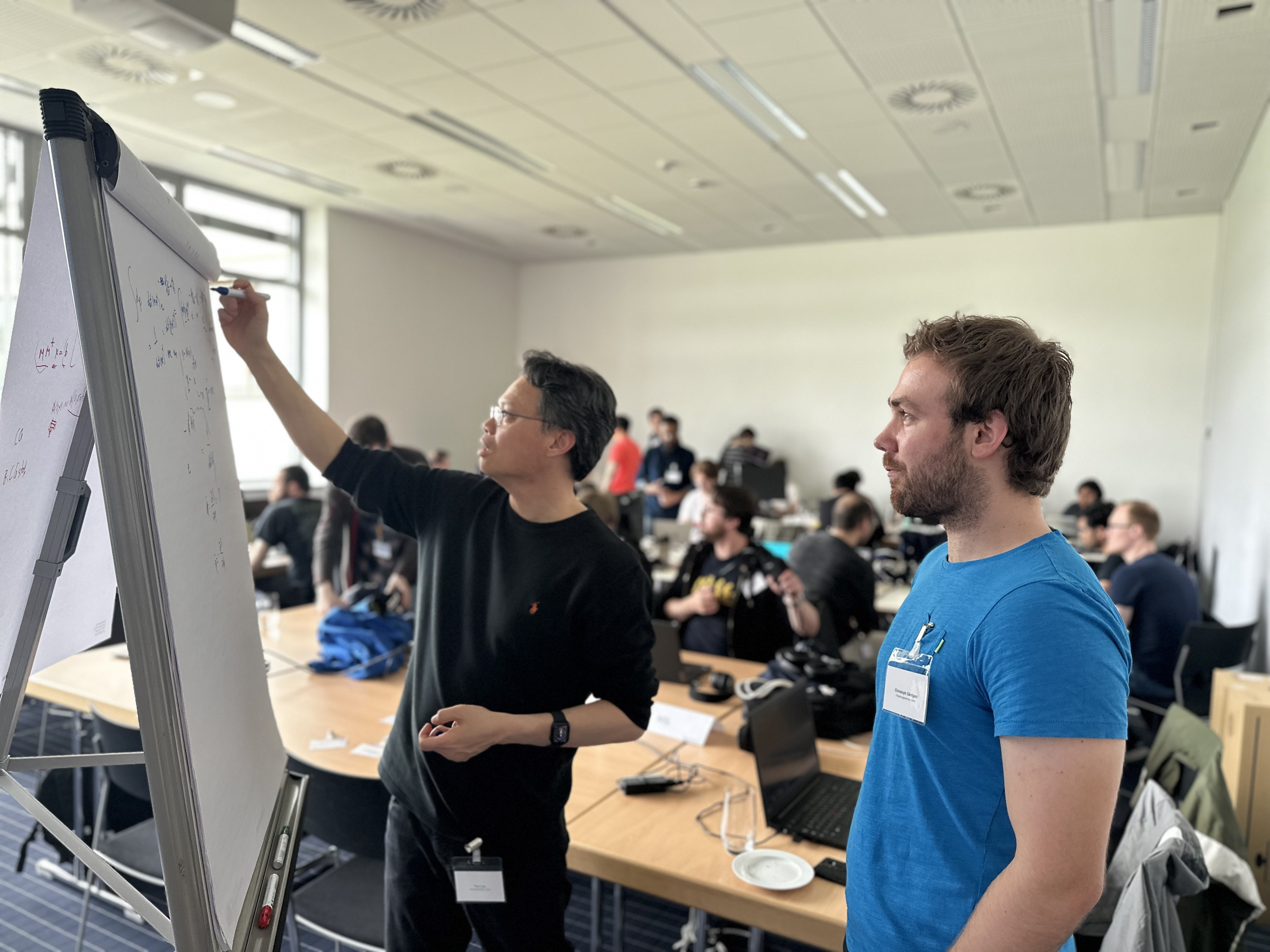
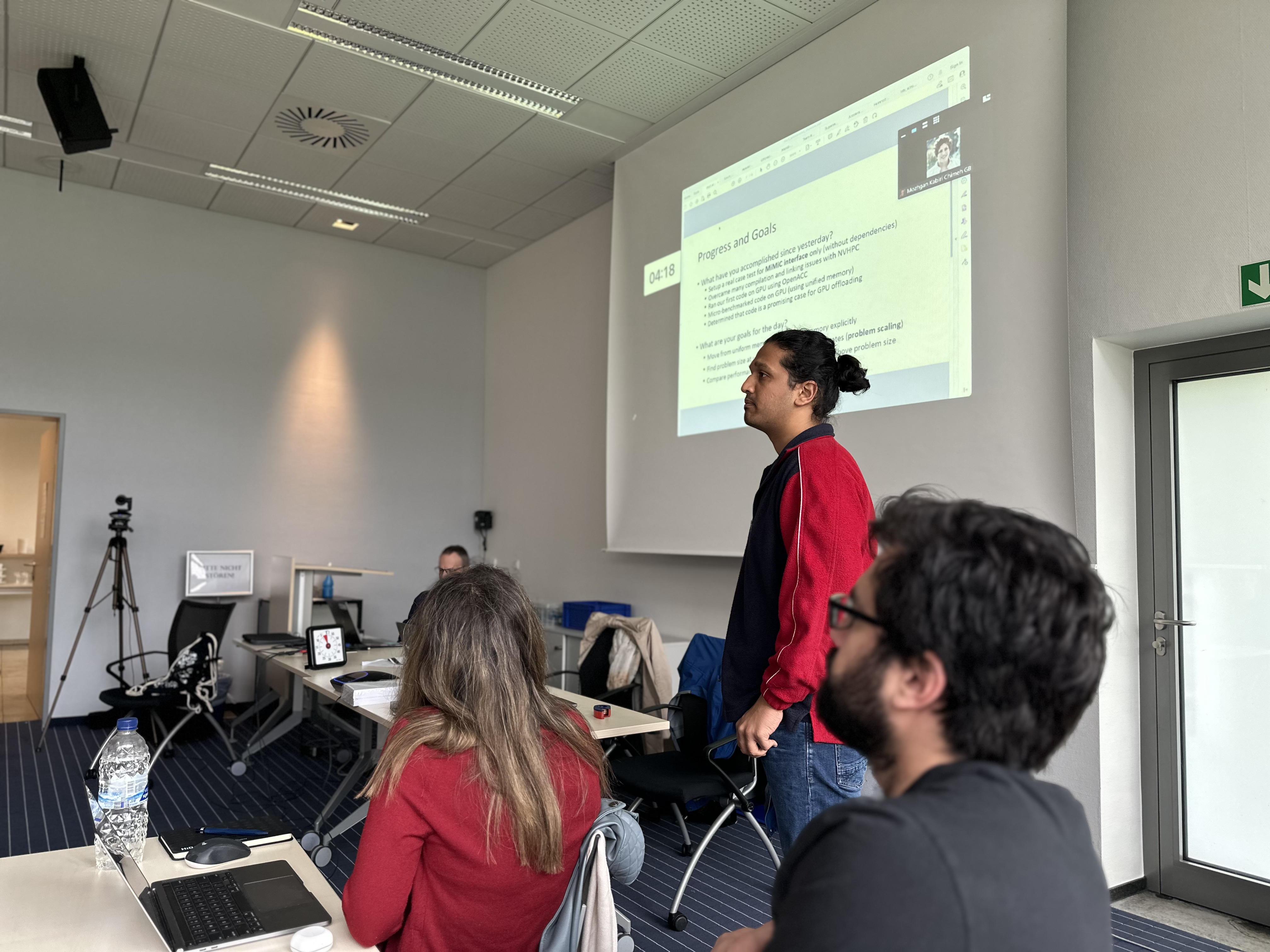
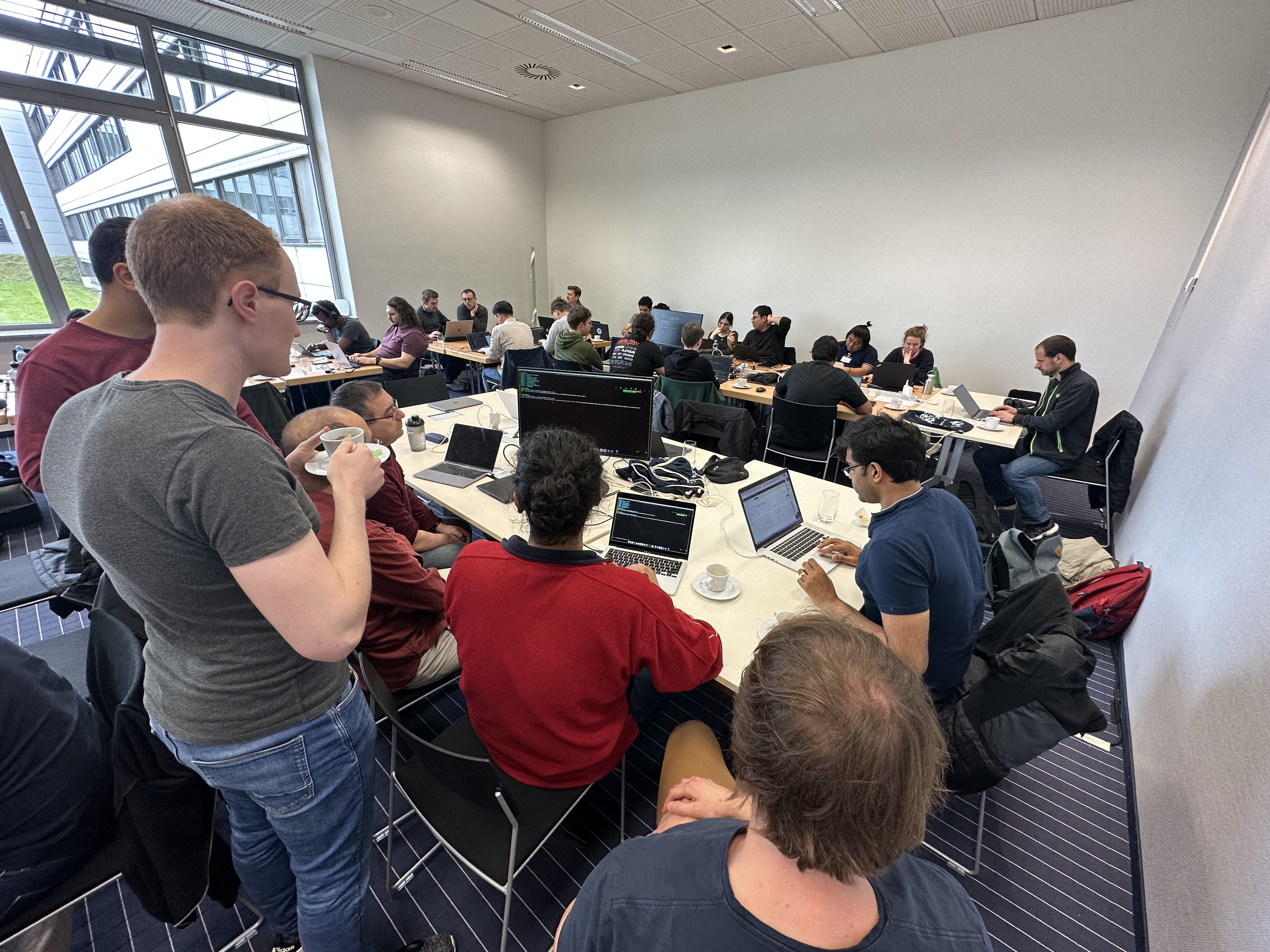
No Comments
Be the first to start a conversation